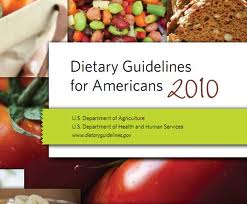Cardiovascular disease (Heart disease):
• 81.1 million Americans—37 percent of the 13 population—have cardiovascular disease.Major risk factors include high levels of blood cholesterol and other lipids, type 2 diabetes, hypertension (high blood pressure), metabolic syndrome, overweight and obesity, physical inactivity, and tobacco use.
• 16 percent of the U.S. adult population has high 14 total blood cholesterol.
Hypertension (High Blood Pressure):
• 74.5 million Americans—34 percent of U.S. 15 adults—have hypertension.
• Hypertension is a major risk factor for heart disease, stroke, congestive heart failure, and kidney disease.
• Dietary factors that increase blood pressure include excessive sodium and insufficient potassium intake, overweight and obesity, and excess alcohol consumption.
• 36 percent of American adults have prehypertension—blood pressure numbers that are higher than normal, but not yet in the 16 hypertension range.
Diabetes (High Blood Sugar):
• Nearly 24 million people—almost 11 percent of the population—ages 20 years and older have 17diabetes. The vast majority of cases are type 2 diabetes, which is heavily influenced by diet and physical activity.
• About 78 million Americans—35 percent of the U.S. adult population ages 20 years or 18older—have pre-diabetes. Pre-diabetes (also called impaired glucose tolerance or impaired fasting glucose) means that blood glucose levels are higher than normal, but not high enough to be called diabetes.
Cancer:
• Almost one in two men and women—approxi-mately 41 percent of the population—will be 19 diagnosed with cancer during their lifetime.
• Dietary factors are associated with risk of some types of cancer, including breast (post-menopausal), endometrial, colon, kidney, mouth, pharynx, larynx, and esophagus.
Osteoporosis (Bone loss):
• One out of every two women and one in four men ages 50 years and older will have an 20 osteoporosis-related fracture in their lifetime.
• About 85 to 90 percent of adult bone mass is acquired by the age of 18 in girls and the age 21of 20 in boys. Adequate nutrition and regular participation in physical activity are important factors in achieving and maintaining optimal bone mass.
Acknowledgments :
LivingNaturallyHealthy.com acknowledges the work of the U.S. Department of Agriculture and the U.S. Department of Health and Human Services acknowledge the work of the 2010 Dietary Guidelines Advisory Committee whose recommendations formed the basis for this edition of the Dietary Guidelines for Americans.
 November 28th, 2013
November 28th, 2013 






